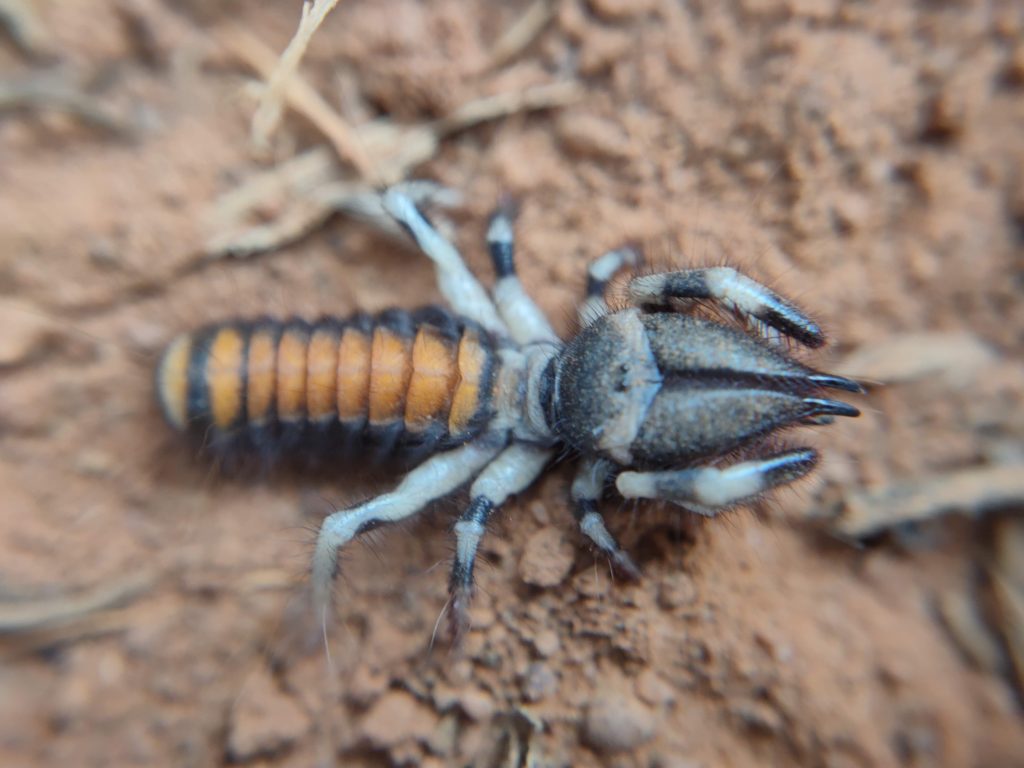Manjunath S Nayak
There are many elusive species of spiders found in nature that are difficult to sight and study. In fact, scientists even speak about some specialized parts in such species that are fascinating. Camel spider is one such species that was recently sighted at Cheluru village of Gubbi taluk, Tumakuru district, Karnataka, India. If one remembers, the camel spiders gained notoriety during the Gulf War and a lot of powers were attributed to them which was all a big myth.

Camel spider which is known by alternative names like Wind scorpion and Sun spider is neither a spider nor a scorpion. Not much is known about their behaviour or morphology. An old myth gave its name ‘Camel Spider’ as when they were moving under a camel in the deserts, they were said to leap into the air and disembowel it, eating its stomach. All a myth as probably, they were taking shade under the camel’s body.
The Camel spider is actually a Solifuge (an order of Arachnids) that possesses morphological characters of False scorpion (Pseudo scorpion). The Solifugae occur in tropical and temperate habitat worldwide. Galeodes indicus is the species of camel spider that was documented from Telangana in 2014 and Jaisalmer district in western Rajasthan in 2016 and also in Karnataka at Daroji Sloth Bear Sanctuary in 2011.

In all these three documentations, Galeodes indicus is well documented. But in two observation cases in Karnataka, it has shown the distribution of Ragodima species solifugid. There is another record of the same genus found at GKVK Campus, Bengaluru by a team of enthusiastic naturalists Chinmay Maliye, Harshit, Jitesh and Sanath. The size of this specimen was 3.5 cm and the one which was recently recorded in Cheluru is 4.5 cm. The sexes of both the specimens are unknown since the study of Solifugae has not been done by any Indian Arachnologist (a biologist who studies spiders and other arachnids of all size, shape and varieties).

The species observed by Chinmay had orange colour segments while the other had red coloured segments. Their main food is insects such as termites, beetles while other arachnids rarely feed on small snakes, lizards and rodents. Since they prey on agro-pests and vermin, the camel spiders play a vital role in the ecological food chain. Hence it is a farmers’ friend.
This species was sighted on June 24 by me, Sunil Kumar Maralakunte, a Naturalist and Manjunath S, a student.
(The author is a Biodiversity Researcher & Academician)
